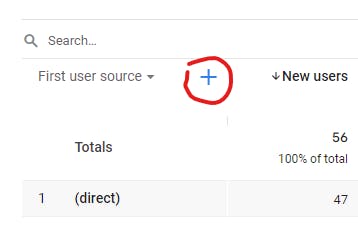Step-by-Step Guide: Leveraging Secondary Dimension in Google Analytics
Step-by-Step Guide: Leveraging Secondary Dimension in Google Analytics
Blog Article
Unlock Deeper Insights With Second Measurement in Google Analytics
With the large stretch of information readily available in Google Analytics, the usage of second measurements can substantially improve your analytical capacities. These additional layers of data supply a nuanced point of view that can light up intricate details within your primary metrics. By strategically incorporating additional measurements right into your analysis, you can discover important understandings that might or else remain undiscovered. The capability to analyze and divide user behavior with better accuracy opens up a world of possibilities for boosting and optimizing techniques performance.
Comprehending Key Vs. Second Measurements
When evaluating data in Google Analytics, it is important to distinguish between main and additional measurements to gain deeper understandings right into individual behavior. Main measurements are the main categories whereby you can see your data, such as tool, touchdown, or source/medium page. These measurements give the essential structure for arranging and recognizing your data. On the other hand, second dimensions permit you to additional study your key measurement data. By including an additional measurement, you can layer on extra info to your main dimension, enabling an extra granular evaluation. If your key dimension is the source/medium through which customers got here on your website, including an additional dimension like geographic area can expose where those users are located geographically. When looking at the primary measurement alone, this added layer of details can aid you identify fads, patterns, or abnormalities that may not have been obvious. As a result, leveraging both key and additional dimensions in Google Analytics is vital for extensive information analysis and educated decision-making.
Using Second Dimensions Effectively
By incorporating second measurements alongside key measurements, marketers and experts can delve much deeper into the specifics of customer interactions on their websites. Additional dimensions enable users to section and filter primary dimension information additionally, providing a much more detailed view of customer demographics, actions, and interactions.
In addition, additional measurements allow users to compare and contrast different data factors within a solitary report, facilitating a more comprehensive evaluation of individual habits patterns. By leveraging second dimensions properly, services can reveal concealed understandings, optimize their advertising and marketing techniques, and boost the overall customer experience on their web sites.
Checking Out Usual Additional Measurement Mixes
To even more analyze customer actions and trends in Google Analytics, it is useful to discover usual mixes of secondary dimensions. Some usual second dimension mixes that give beneficial insights consist of evaluating traffic sources with customer locations to recognize where site visitors are coming from geographically and how they discovered the website. Examining user actions metrics helpful hints with second dimensions such as passions or demographics can assist in targeting details audience sectors more efficiently.
Applying Second Measurement in Custom Reports
Using second measurements in personalized reports enables an extra detailed analysis of information in Google Analytics, enhancing the depth of understandings gotten. When developing custom records in Google Analytics, including second measurements can give a more thorough view of exactly how different dimensions interact with each other. This attribute allows users to dive deeper into their data and discover valuable relationships that may not be quickly evident.
By using secondary measurements in custom-made reports, users can get a far better understanding of their site or app web traffic. For example, combining the key measurement of "source/medium" with the secondary dimension of "landing web page" can disclose which touchdown pages are performing finest for website traffic coming from specific resources. This understanding can help marketing professionals maximize their campaigns and boost overall conversion prices.

Enhancing Data Visualization With Second Measurement
When discovering data in Google Analytics custom-made records, including secondary measurements not only gives a more in-depth evaluation yet also improves the graph of understandings Full Report through data visualization. By adding a secondary measurement to your reports, you can enhance the means data is offered, making it simpler to recognize patterns, trends, and relationships within your internet site's performance metrics.
Additional dimensions can help you section your information further, enabling for a deeper understanding of individual habits and interactions on your site. This improved level of granularity can be specifically useful when trying to separate details variables that may impact your internet site's efficiency - Secondary Dimension in Google Analytics.
Final Thought
To conclude, leveraging additional measurements in Google Analytics permits a much more detailed analysis of information, causing deeper understandings and even more informed decision-making. Secondary Dimension in Google Analytics. By including extra layers of details to key data collections, analysts and marketing professionals can uncover surprise patterns, patterns, and connections that give a granular view of individual behavior and communications. This enhanced level of understanding enables optimization of projects and tailored approaches for particular audience segments, ultimately improving efficiency and conversion prices
On the various other hand, second dimensions enable you to further study your primary measurement data. By including an additional measurement, you can layer on additional details to your main dimension, allowing a much more granular evaluation. If your main measurement is the source/medium with which individuals arrived on your website, including a second dimension like geographic location can disclose where those individuals are located geographically. By incorporating secondary measurements along with main measurements, analysts and marketers can dive deeper right into the specifics of user interactions on their websites. Secondary dimensions allow users to sector and filter primary dimension information even more, using a more in-depth view of individual demographics, communications, and habits.
Report this page